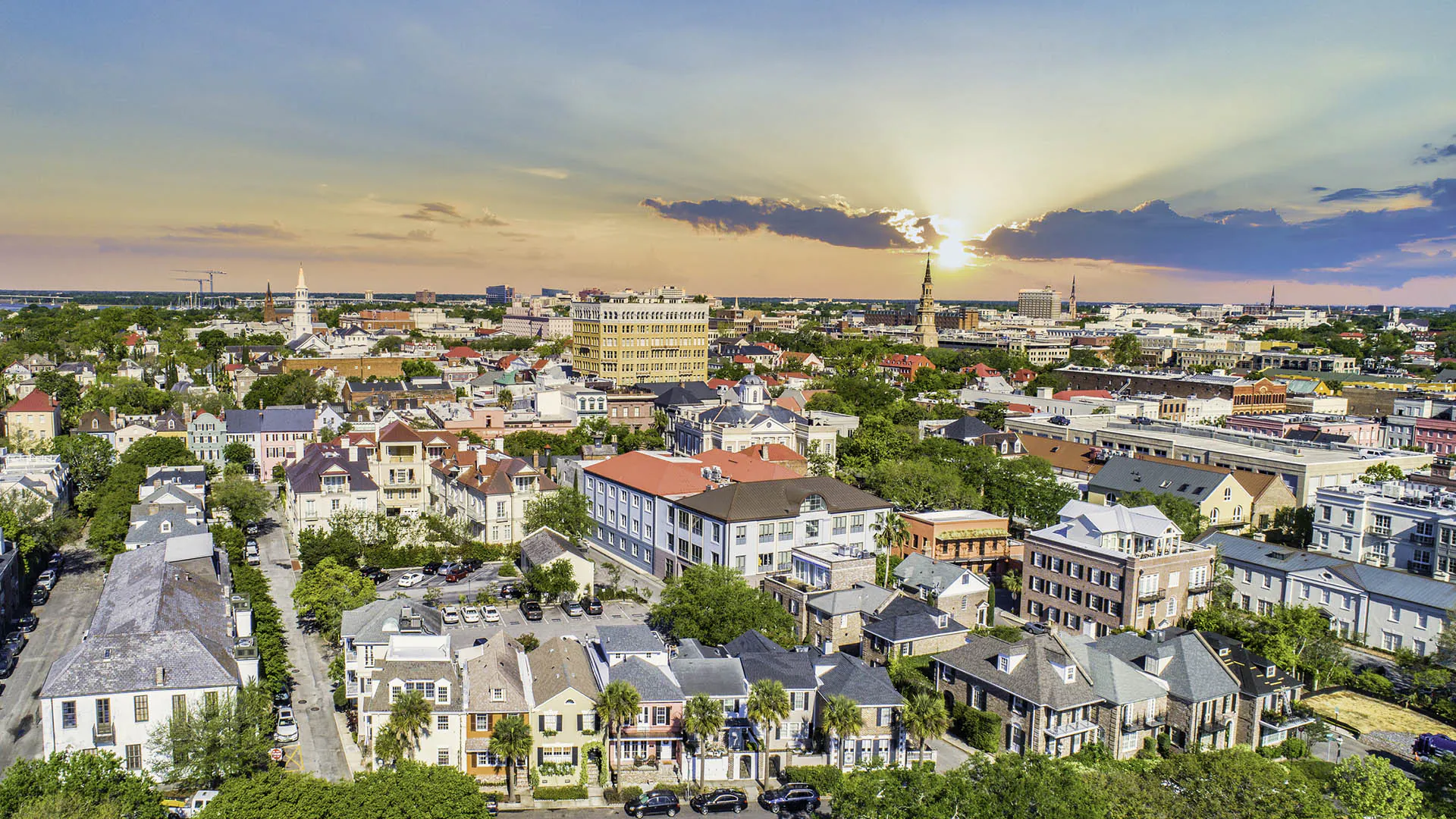Key Highlights
- Charleston, South Carolina, is pioneering sustainable growth by balancing urban development with environmental preservation.
- Green spaces, such as public parks and reserves, play a crucial role in maintaining ecosystem health amid expansion.
- Community-led initiatives and organisations, like the Environmental Conservation Corps, foster conservation through engagement and mentorship.
- Modern infrastructure planning prioritizes stormwater management and energy-efficient transportation solutions.
- The Capital Improvement Plan (CIP) addresses resiliency by integrating innovative conservation strategies into Charleston’s long-term development.
- Residents actively contribute to land and water conservation efforts through various programs and workshops.
Introduction
Charleston in South Carolina is a great example of how a city can grow and still focus on sustainability. This city works to keep its environment safe even as it gets bigger. People here know that they have to keep up a good balance between building new things and saving what is already there. Because of this, Charleston has a better and greener future ahead.
The area is doing a lot to protect its green spaces and waterways. It also works to improve its roads and buildings while thinking about the environment. This coastal city takes sustainability seriously. That makes it a good example for other cities in the United States to follow. Take a closer look at Charleston, and you will see many efforts to care for natural beauty while helping the city grow in a smart way.
The Challenge of Sustainable Growth in Charleston
Finding ways to keep up with sustainable growth in Charleston is not easy. The city keeps getting bigger. More people move to Charleston every year. This puts the spotlight on how Charleston, Berkeley, and other areas in the coastal part of South Carolina handle sustainability. It is important that city growth and projects go together with care for the environment. This helps the area stay strong in the long run.
Keeping the natural beauty of Charleston safe is not simple. The Lowcountry is known for its sensitive waterways and special wildlife. There needs to be a balance between growing the city and saving these places. Doing this protects Charleston’s looks, helps its economy, and keeps its culture and its environment alive.
Population Increases and Urban Expansion
There is a big increase in the population in Charleston, SC. This new growth is a time full of chances, but there are also some problems. The way Charleston is growing is a lot like what is happening in other parts of the United States. The city is getting bigger fast. More people are coming to live here because there are good jobs and strong schools. Still, this also means the city has more worries about the environment.
As Charleston grows, people who plan the city’s future must meet the needs for more homes, better roads, and new businesses. They need plans to lower harm to nature and also still follow ideas of sustainability. Growing the city has to fix problems like trash, animals losing their homes, and air and water getting dirty.
Planners are using new and creative ways to help Charleston stay special. They use smart ways to help the city grow, work with the community, and bring in rules that care for nature most of all. This way, Charleston can still develop in a smart way and keep the things that people love. That is important because the city wants to protect its natural beauty while it keeps moving forward.
The changes happening in Charleston, SC, show there is both hope and work to do. The united states has many cities dealing with these same things. With good ideas and a focus on sustainability, Charleston can stay a great place now and in the future.
Pressures on Local Ecosystems
Charleston is growing fast, and this change puts a lot of pressure on the area’s natural places. As there is less public land and the city spreads out, the Lowcountry Land Trust steps up to protect the sensitive ecosystems found in coastal South Carolina. They do a lot for clean water, and that is important when so much land is used for new development.
There is a balance between letting the city grow and keeping nature safe. When we build more homes and stores, land gets split up and animals lose their homes. If we do not step in, both marine and freshwater systems can be harmed. To help with this, strong environmental rules are needed so there is less pollution and to keep Charleston’s special ecosystems healthy.
Groups such as the Lowcountry Land Trust, with help from other non-profit groups, lead the way when it comes to saving habitats along the coast. Conservation projects help bring back land, give animals a safe path to move, and help more people have clean water. This keeps public lands open for everyone, now and in the years to come. The special places along Charleston’s coast depend on these good efforts to last.
Preserving Green Spaces Amid Development
The push for sustainable growth is making Charleston focus on keeping green spaces safe. Public lands are very important. They help stop cities from spreading out too much. They also help with biodiversity and make life better for the people who live there. The Environmental Conservation Corps works with local people to help look after Charleston’s open areas.
Community engagement is key to making conservation work. When locals help out, projects stay close to what people feel and need. This gives everyone a real chance to help take care of Charleston’s environment. Focused groups make sure green spaces keep going strong, even as new building gets closer to the protected areas.
The Role of Parks and Natural Reserves
Parks and reserves in Charleston are very important for nature. They help keep many kinds of plants and animals safe. These spots make life better for everyone. Groups like the Coastal Conservation League take care of thousands of acres to protect these delicate areas.
|
Park Name |
Size (Acres) |
Conservation Partner |
|---|---|---|
| Angel Oak Park | 400 | Lowcountry Land Trust |
| Charleston County Park | 10,000+ | Coastal Conservation League |
| Francis Marion Forest | 258,000+ | Advocacy Groups |
These areas are not just for protecting nature. They give people a place to play, relax, and enjoy the natural beauty of coastal South Carolina. When government and non-profits work together, they help make sure Charlestion’s public lands stay important for both nature and people.
Continuing to care for nature means these reserves in Charleston will keep the land strong for many years. They keep giving people and wildlife a good place to go and grow.
Community-Led Conservation Initiatives
Conservation is strong in Charleston because of community engagement and help from groups like the Environmental Conservation Corps. This group focuses on mentorship. It gets people involved to help protect public lands in coastal South Carolina.
People in the program get to help with salt marsh restoration, building trails, water testing, and making rain gardens. These projects give hands-on experience and teach you about caring for the environment. Young people get good skills to care for public lands and start a career in conservation.
The work also brings together schools, non-profits, and local people. So, conservation work goes much further than just inside groups or government. People who want to help are shaping Charleston’s future to be sustainable. Because of these efforts, Charleston stands out as an example for the rest of the United States on environmental conservation.
Modern Infrastructure and Environmental Resiliency
Charleston is changing how people see resiliency by building with an eye on sustainability. The city brings together energy efficiency and better ways to handle stormwater. These changes help the waterways and also support urban growth. By using this kind of smart planning, Charleston can take on tough environmental problems, but it still grows and moves forward.
Charleston uses everything from renewable energy to green ways to get around. The city’s work shows it wants to be a strong coastal community. The city’s plans are set up to keep its waterways healthy and to make sure that growth will be good for a long time.
The focus on sustainability helps both the people who live there now and those who will come in the future.
Integrating Stormwater Management Solutions
Good stormwater management helps Charleston reach its sustainability goals. The city uses systems to protect its waterways and keep clean water available for everyone. Some methods, like rain gardens and living shorelines, help reduce runoff and protect natural habitats.
In Berkeley County and nearby areas, there are special programs to check water quality and restore oyster reefs. These projects help fight flooding and pollution. They also show how Charleston works to lower the environmental risks that come from building and growing in the city.
Groups from the government and non-profits work together so that stormwater solutions support bigger sustainability goals. These efforts help new building projects respect and strengthen the ecosystem in Charleston and its waterways.
Sustainable Transportation and Urban Planning
Charleston is changing how the city plans new spaces, with a big focus on sustainability and cutting down on energy use.
- Greenways and bike lanes help people get around in clean and low-cost ways.
- Smart city zoning brings in public transport, so people do not need to use their cars as much.
- Buses powered by renewable energy lower pollution and still let people get to where they need to go with ease.
- Making areas better for walking helps the environment and gets people to move in a more eco-friendly way.
Charleston uses new ideas to move closer to sustainability. It gives the city a good balance between growing its transport systems and protecting nature. The city is a great example of full, smart urban planning.
Conclusion
To sum up, Charleston is showing how a city can grow while still caring for nature. The city has worked to keep green spaces, has put money into better roads and buildings, and helps the people run their own programs. This helps the city find a good balance between new growth and the environment.
Charleston has added ways to manage stormwater and given more choices for how people travel. This fixes many of today’s problems and helps the city face anything that may come in the future. The way Charleston does this can help guide others.
Your help matters to keep this work going. When we all take part, Charleston can grow and still take care of its natural places. If you want to know more about what you can do, reach out today to get more info.
Frequently Asked Questions
What strategies are in place to balance growth and conservation in Charleston?
Charleston takes care of the environment by planning its city with nature in mind. It helps groups like the Coastal Conservation League. The city gets people involved by running programs like the Environmental Conservation Corps. Charleston keeps public lands safe, and makes sure building and caring for the environment go together. These actions help with community engagement and protect the area.
How does the Capital Improvement Plan (CIP) support sustainability?
The Capital Improvement Plan (CIP) focuses on projects that help the environment. This plan adds green features, makes buildings use less energy, and supports smart use of land. By putting money into these things, the CIP helps Charleston grow in a way that matches its sustainability and conservation goals. This work is important for the city’s long-term health and the planet.
What impact does urban growth have on Charleston’s wetlands and waterways?
Urban growth in Charleston changes the wetlands and waterways. These changes make flooding more likely and increase pollution. Conservation groups in South Carolina try to help by supporting clean water, building better ways to manage stormwater, and working on projects to restore what has been lost. They do all this to keep these important waterways safe for everyone.
Are there ways for residents to get involved in environmental preservation?
Residents can take part in Environmental Conservation Corps mentorship programs. They can also help by working as volunteers on public lands projects. Some may want to join workshops on conservation, too. People in Charleston get the chance to help save nature by joining efforts like salt marsh restoration and community-led projects. This work lets people get real experience and play a part in taking care of the area.
What long-term goals does Charleston have for environmental resiliency?
Charleston puts a strong focus on sustainability. The city works to be more energy efficient and to keep the natural ecosystem safe. There is a big effort to keep waterways clean. People in the community, along with groups like the Coastal Conservation League, work together to help with this. This teamwork helps make sure the area is safe for the future. It also fits with bigger plans for resiliency in coastal South Carolina and across the United States.



